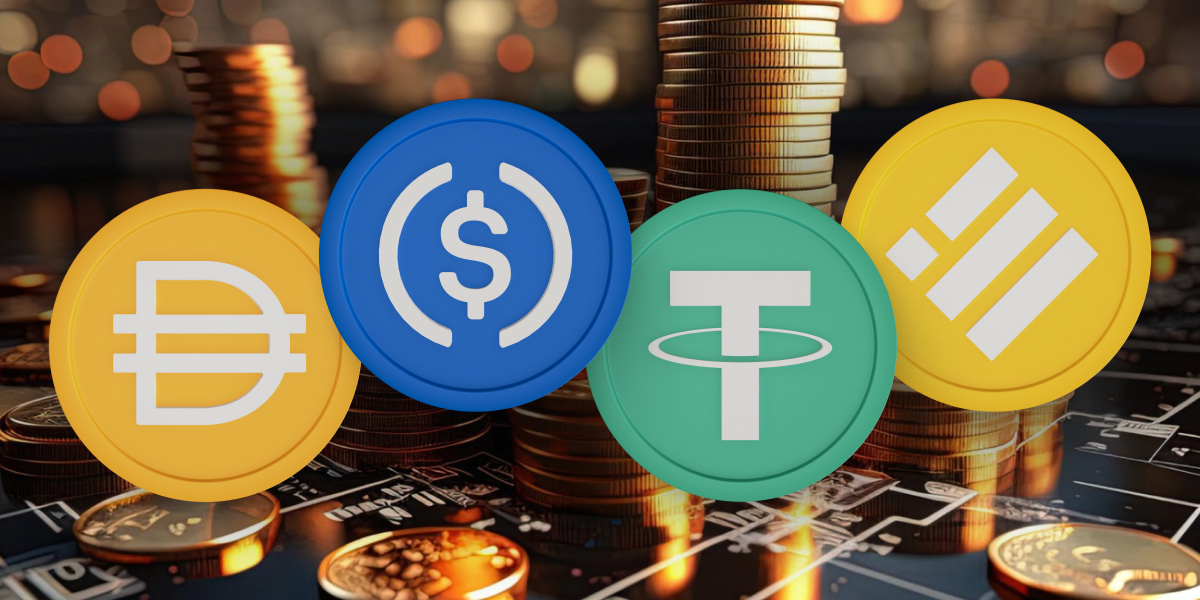Navigating The World Of Cryptocurrencies: Understanding Stablecoins And Value Stability
Navigating the World of Cryptocurrencies: Understanding Stablecoins and Value Stability

- Evaluating A Crypto Exchange: Navigating The Complex World Of Digital Assets
- Dipping Your Toes Into The World Of Micro Investing With Cryptocurrency
- Unlocking The Power Of Decentralized Finance: A Beginner’s Guide To Profiting From DeFi Lending And Borrowing Protocols
- Blockchain Technology: Revolutionizing Data Privacy In The Digital Age
- The Best Crypto Staking Platforms For Passive Income
As the world of digital currencies continues to evolve, it’s hard not to get caught up in the excitement and curiosity that surrounds this rapidly growing market. Since the introduction of Bitcoin in 2009, the landscape of cryptocurrencies has expanded exponentially, with new coins and tokens emerging on a regular basis. But within this ever-changing landscape, there exists a unique and fascinating subset of cryptocurrencies known as stablecoins.
Stablecoins, as their name suggests, are designed to maintain a stable value relative to a particular currency or asset, such as the US dollar. Unlike traditional cryptocurrencies, which can experience wild fluctuations in price, stablecoins aim to provide a sense of security and predictability, making them an attractive option for those looking to utilize digital currencies for everyday transactions or store value over time.
So, how exactly do stablecoins work, and what makes them so unique? To answer this, let’s first delve into the world of traditional cryptocurrencies.
Cryptocurrencies, like Bitcoin and Ethereum, are decentralized and operate independently of central banks and governments. Their value is determined by market supply and demand, which can lead to significant price swings. This volatility can be exciting for investors, but for everyday users, it can be a major turn-off. Imagine trying to buy a cup of coffee with Bitcoin, only to find that the price of your digital currency has plummeted by 10% in the time it takes to complete the transaction.
This is where stablecoins come in. These coins are specifically designed to mitigate price volatility by pegging their value to a stable asset, such as a fiat currency or a commodity like gold. By maintaining a stable value, stablecoins can be used for transactions, savings, or even as a hedge against inflation.
There are several types of stablecoins, each with its own unique mechanisms for maintaining price stability. Some of the most popular stablecoins include:
- Fiat-collateralized stablecoins: These coins are backed by a reserve of fiat currency, which is held in a bank account and used to maintain the coin’s peg. For example, if a stablecoin is pegged to the US dollar, the issuing company will hold a reserve of US dollars equivalent to the amount of stablecoins in circulation.
- Commodity-collateralized stablecoins: These coins are backed by a reserve of a commodity, such as gold or oil. The value of the stablecoin is directly tied to the value of the underlying commodity.
- Algorithmic stablecoins: These coins use complex algorithms to maintain their peg, without the need for a physical reserve. Instead, the algorithm adjusts the supply of stablecoins in circulation to maintain the desired price.
So, how do stablecoins maintain their value stability? In the case of fiat-collateralized stablecoins, the issuing company holds a reserve of fiat currency, which can be used to buy back stablecoins if their price begins to fall. This mechanism helps to maintain a stable value and prevents the stablecoin from losing too much of its value.
In addition to their price stability, stablecoins offer several benefits over traditional cryptocurrencies. These benefits include:
- Predictability: Stablecoins make it easier to predict the value of your digital currency, making them more suitable for everyday transactions.
- Low volatility: By maintaining a stable value, stablecoins can reduce the risk of price swings, making them more attractive to investors and everyday users.
- Accessibility: Stablecoins can be used by anyone, anywhere in the world, without the need for a bank account or a specific financial infrastructure.
As the cryptocurrency market continues to evolve, stablecoins are likely to play an increasingly important role. They offer a unique solution to the problem of price volatility, making digital currencies more accessible to a wider range of users. Whether you’re an investor, a trader, or simply someone looking to try out digital currencies, understanding stablecoins and their value stability is essential for navigating this rapidly growing market.
So, what’s next for stablecoins? As more and more stablecoins enter the market, competition will increase, and innovation will continue to evolve. We’re likely to see new mechanisms for maintaining price stability, new types of stablecoins, and even new use cases for these fascinating digital currencies.
In conclusion, stablecoins represent an exciting and unique subset of cryptocurrencies, offering a stable value and predictability in an otherwise volatile market. As the digital currency landscape continues to evolve, it’s clear that stablecoins will play a key role in shaping the future of this rapidly growing market.
